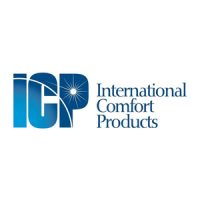Note:Theblowermotoris permanentlylubricated.No
furtherlubricationisrequired.Donotattempttolubricate
theblowermotor.
Burners/ Heat Exchangers / Flue Gas Passages
To inspect the burners, heat exchanger and interior flue gas
passages, use a light and small mirror on an extension
handle.
Check the exterior of the heat exchanger and the interior
flue gas passages for any evidence of deterioration due to
corrosion, cracking or other causes. If signs of scaling or
sooting exist, remove the burners and clean the heat
exchanger, as required.
INSPECTION AND CLEANING OF BURNER
ASSEMBLY/HEAT EXCHANGERS/FLUE GAS
PASSAGES
For Qualified Service Technician Only
See Figure 19 for identification of parts.
1. Disconnect electrical power to unit.
2. Turn OFF gas at manual shut off valve.
3. Remove burner access panel.
4. Remove the vent assembly flue pipe.
5. Disconnect gas pipe at union.
6. Disconnect wires from gas valve, note connections.
7. Remove screws that secure the flame shield and
remove gas control valve, manifold and burners as an
assembly.
8. Remove collector box, injector plate, and restrictor
plate, including gaskets.
9. Hold the burner assembly vertically and lightly tap it
against a wood block. Clean also with a stiff brush.
Severe cases of lint clogging may require washing the
burners in hot water.
10. Clean flue gas passages by using small brushes and a
vacuum cleaner. It may be necessary to fabricate
handle extensions for the brushes to reach the areas
that require cleaning. Reinspect after cleaning and
replace the heat exchanger if defective.
11. Reinstall parts and gaskets in reverse order. On direct
spark models check the spark gap. 1/8 inch is required
between the sparker electrodes.
12. Turn gas on and check for leaks.
13. Install all access panels, turn power on and check for
normal operation.
REFRIGERANT CIRCUIT
For Qualified Service Technician Only
Annually inspect all refrigerant tubing connections and the
unit base for oil accumulations. Detecting oil generally
indicates a refrigerant leak.
ENVIRONMENTAL HAZARD.
Failure to follow this warning could result in personal
injury, death and/or property damage.
System under pressure. Relieve pressure and recover
all refrigerant before system repair or final unit
disposal. Use all service ports and open all flow
control devices, including solenoid valves.
Federal regulations require that you do not vent
refrigerant to atmosphere. Recover during system
repair or final unit disposal
If oil is detected or if low cooling performance issuspected,
leak-test all refrigerant tubing using an electronic leak
detector, halide torch, or liquid-soap solution,
1191

